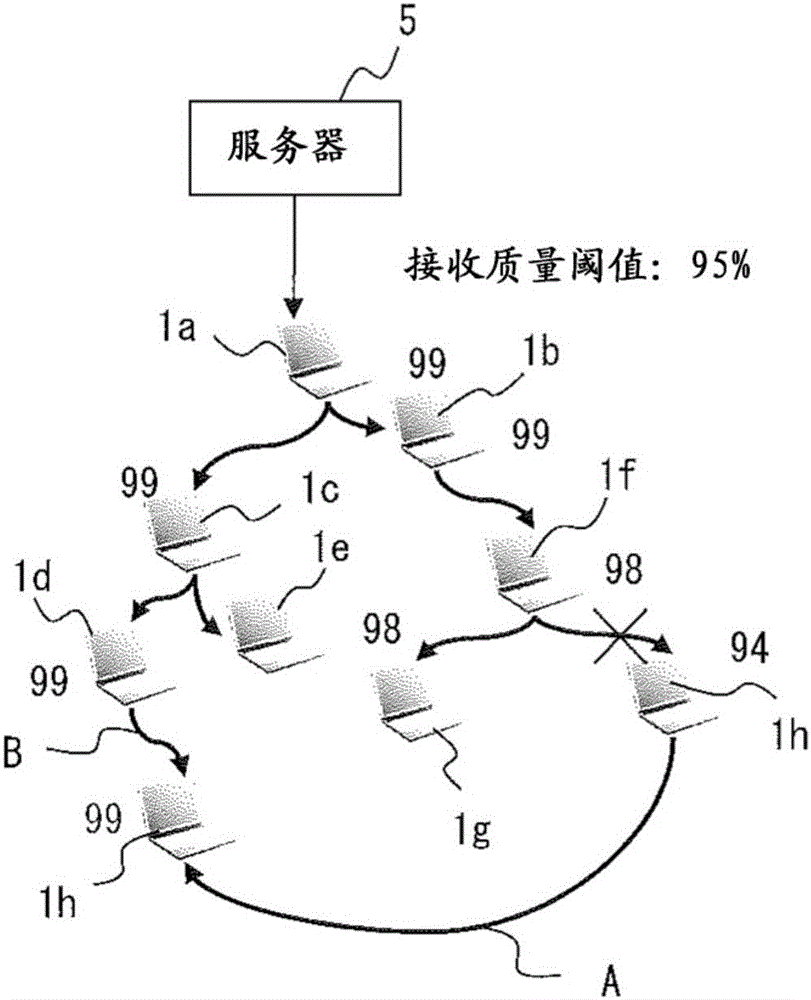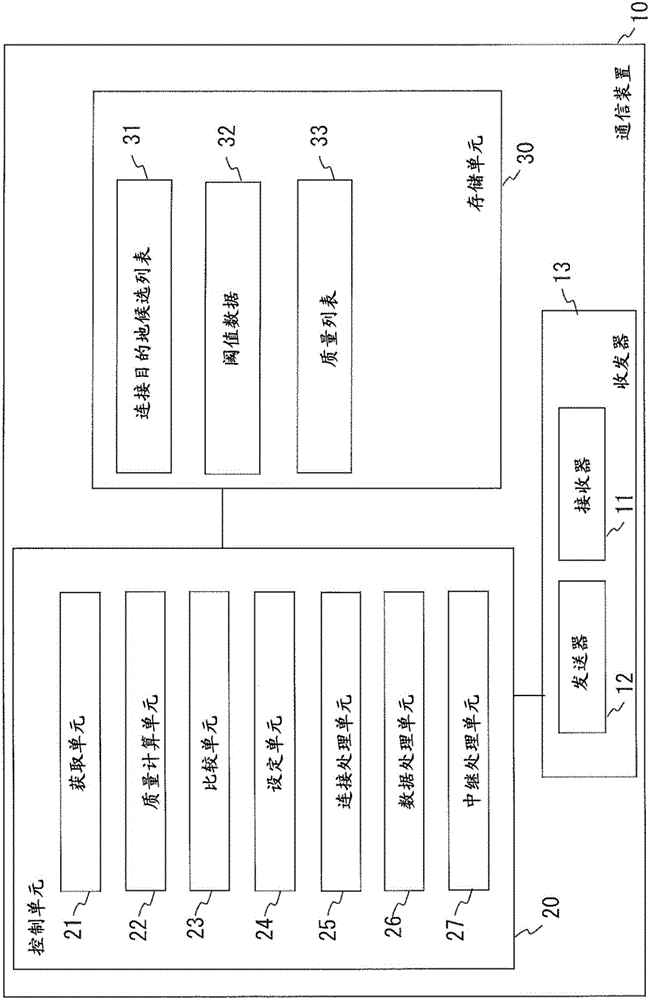Connection method and communication device, and communication system
A technology of a communication device and a connection method, applied in the fields of connection, communication device and communication system, can solve problems such as failure to obtain data and deterioration of data distribution efficiency.
- Summary
- Abstract
- Description
- Claims
- Application Information
AI Technical Summary
Problems solved by technology
Method used
Image
Examples
Embodiment approach
[0035] Hereinafter, an example of processing performed when the communication device 10 newly participates in the data distribution system will be explained as acquisition of candidates for connection destinations, calculation of reception quality, and determination of connection destinations in the data distribution system. Hereinafter, in order to clearly express which of the communication devices 10 is performing processing, the same characters as the identifiers assigned to the communication devices 10 may be added to the end of the reference numerals. For example, the acquisition unit 21h refers to the acquisition unit 21 included in the communication device 10h.
[0036] (1) Acquisition of candidates for connection destinations
[0037] Figure 5 An example of a method of acquiring information of a connection destination is shown. Figure 5 The network shown in includes a server 5 and three groups G1 to G3, however, any number of groups may exist in the network. Each ...
PUM
 Login to View More
Login to View More Abstract
Description
Claims
Application Information
 Login to View More
Login to View More - R&D
- Intellectual Property
- Life Sciences
- Materials
- Tech Scout
- Unparalleled Data Quality
- Higher Quality Content
- 60% Fewer Hallucinations
Browse by: Latest US Patents, China's latest patents, Technical Efficacy Thesaurus, Application Domain, Technology Topic, Popular Technical Reports.
© 2025 PatSnap. All rights reserved.Legal|Privacy policy|Modern Slavery Act Transparency Statement|Sitemap|About US| Contact US: help@patsnap.com



